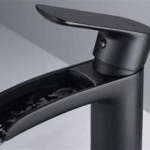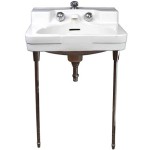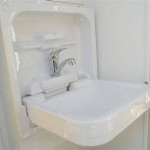Tiny Grey Bugs in the Bathroom That Jump: Identification and Control
Finding tiny grey bugs jumping around in your bathroom can be unsettling. These creatures, often mistaken for fleas or other pests, can be a source of both annoyance and worry. Identifying the specific bug species is crucial for determining the most effective control methods. This article will explore the common culprits behind these tiny grey jumping bugs in bathrooms, their characteristics, and practical strategies to eliminate them.
Identifying the Culprit: Common Bathroom Bug Suspects
Several bug species could be responsible for the tiny grey jumping insects in your bathroom. Here are some of the most likely candidates:
- Springtails: These minuscule, insect-like creatures are often found in damp environments, including bathrooms. They typically measure less than 1/8 inch long, have a distinct forked tail, and exhibit a characteristic jumping motion when disturbed. Their color can range from grey to white or even black.
- Carpet Beetles: Unlike springtails, carpet beetles are true beetles, with hard wings and a more rounded shape. The larvae of carpet beetles, which are often responsible for damage to carpets and fabrics, are small and hairy and can appear grey.
- Fleas: While fleas are more commonly associated with pets, they can also infest homes, particularly bathrooms. They are wingless, dark brown, and excellent jumpers. Adult fleas can be difficult to spot due to their tiny size, but their presence is often revealed by their bites.
- Silverfish: These elongated, silver-colored insects are known for their rapid movements and ability to squeeze into tight spaces. While not strictly jumping insects, they may appear to jump due to their quick, darting movements.
Understanding the Causes of Bathroom Bug Infestations
Bathroom environments often provide ideal conditions for certain bug species to thrive. Understanding the factors that attract these pests helps address the underlying causes of infestation:
- Moisture: Bathrooms are naturally damp environments, providing a suitable habitat for moisture-loving bugs like springtails and silverfish. Leaks, condensation, and poor ventilation can exacerbate this problem.
- Food Sources: While bathrooms may seem clean, they can harbor food sources for certain insects. Hair, skin cells, food crumbs, and even mildew can attract pests like carpet beetles.
- Warmth: Bathrooms often maintain a warm and humid temperature, providing an attractive environment for bugs like springtails and fleas to reproduce and thrive.
Effective Strategies for Controlling Bathroom Bugs
Addressing a bathroom bug infestation requires a combination of methods targeted at eliminating the pests and preventing their return.
1. Identifying and Eliminating Moisture Sources
- Repair leaks: Promptly fix any leaks in plumbing fixtures, pipes, or faucets.
- Improve ventilation: Ensure adequate ventilation in the bathroom by using an exhaust fan during and after showers.
- Reduce condensation: Wipe down surfaces after showers to prevent condensation buildup, which can create a damp environment.
- Dry any wet areas: Immediately dry any damp areas, such as around sinks and tubs, to discourage the growth of mold and mildew.
2. Implementing Good Hygiene Practices
- Regular cleaning: Thoroughly clean the bathroom regularly, paying attention to corners, crevices, and areas under furniture.
- Vacuuming and sweeping: Use a vacuum cleaner with a HEPA filter to remove dust, dirt, and any bug droppings.
- Washing linens: Wash towels and bath mats regularly in hot water to eliminate potential food sources.
- Discarding clutter: Keep the bathroom free of clutter and unnecessary items that can provide hiding places for bugs.
3. Utilizing Pest Control Measures
- Diatomaceous earth: This naturally derived powder is effective against many insects, including springtails. Sprinkle diatomaceous earth along baseboards and in areas where bugs are found.
- Insect traps: Sticky traps can be helpful in monitoring and capturing small insects, including springtails and carpet beetles.
- Professional pest control: If the infestation is severe or persistent, consider contacting a professional pest control company for expert advice and treatment.

Tiny Bugs That Jump When You Try To Kill Them May Be Springtails What S Bug

Tiny Bugs That Jump When You Try To Kill Them May Be Springtails What S Bug

Bathroom Bugs Identification 15 You Ll See In A

Bathroom Bugs Identification 15 You Ll See In A

Why Do I Have Springtails In The Bathroom Insectek Pest Solutions

Springtails Tiny Jumping Bugs In The Bathroom

Springtails What Are Those Tiny Black Bugs That Jump

Types Of Gray Bugs Silverfish Stink And More With Pictures Identification Guide

Bathroom Bugs Identification 15 You Ll See In A

Tiny Bugs That Jump When You Try To Kill Them May Be Springtails What S Bug
Related Posts







